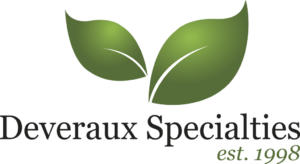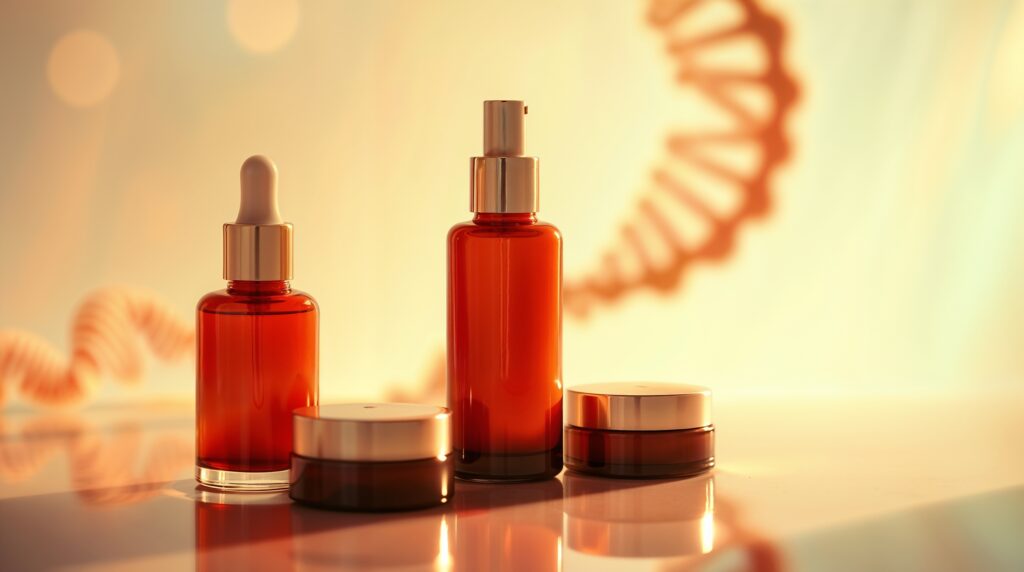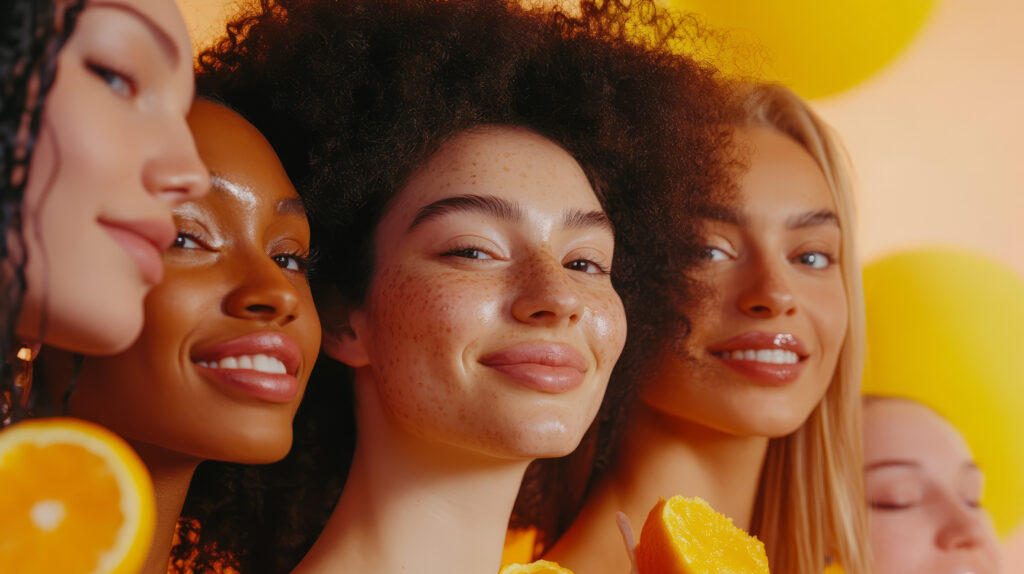Dry Skies, Demanding Skin: The In-Flight Reality
Commercial aircraft cabins hover at relative humidities below 20 percent—often closer to 10 percent—far beneath the 40–60 percent range in which the stratum corneum maintains homeostasis (Taylor, 2018). Under these arid conditions, transepidermal water loss (TEWL) accelerates, tight‐junction proteins loosen, and passengers experience the familiar sensations of tightness and dullness within the first hour of ascent (Kuno et al., 2022). Simultaneously, UVA irradiance rises roughly 8–10 percent for every 1 000 meters of altitude, exposing travelers to an invisible photobiological challenge they rarely confront on the ground (Schmalwieser & Hann, 2020).
Consumers have translated these facts into the viral #AirplaneSkincare conversation, but the underlying problem is physiological, not cosmetic. For formulators, the brief is clear: engineer products that maintain barrier integrity, deep hydration, and photoprotection in environments that destabilize classical emulsions and evaporate water faster than a desert wind.
Formulation Obstacles at High-Altitudes
Unforgiving Moisture Gradients. When cabin humidity is lower than that of the Sahara, water‑activity gradients favour outbound diffusion; even the most sophisticated humectant systems lose efficacy unless paired with durable barrier reinforcement (Rawlings & Matts, 2005). Emollient phases also suffer: fluctuating temperature and pressure during take‑off and landing can drive phase separation, while reduced ambient pressure alters the volatility profile of ethanol‑based mists, shifting both sensory play and drying time.
Barrier Breakdown and Oxidative Stress. Corneodesmosomes and claudins detach under tensile stress, enabling irritants in recirculated air to penetrate more deeply and trigger inflammation (Pilkington et al., 2021). Combine this vulnerability with heightened UVA exposure and you have a recipe for erythema, hyperpigmentation, and DNA lesions—outcomes incompatible with any traveler’s desire to disembark looking rested and camera‑ready.
Real‑World Constraints. Products must meet Transportation Security Administration (TSA) volume limits, remain leak‑proof under low cabin pressure, and deliver precise doses in cramped seats. A bulky jar of cream will not suffice; successful solutions arrive as sticks, solid bars, and micro‑mists that perform under pressure—literally.
CLR’s Ten‑Active Strategy – A Blueprint for Airborne Skincare
CLR Berlin offers a modular toolkit that maps precisely onto the inflight stress profile. Each active targets a specific physiological gap exposed by high‑altitude travel:
Together, these ten actives enable formulators to build a three‑phase regimen—pre‑flight fortification, in‑flight maintenance, and post‑flight recovery—without compromising sensory elegance or regulatory compliance.
Data-Driven Performance: What the Studies Show
Formulating for skin at 35,000 feet requires more than just hydration—it demands a multifactorial strategy that strengthens the skin barrier, restores moisture, defends against UV exposure, and supports recovery from oxidative and inflammatory stress. CLR’s portfolio of 10 clinically backed actives offers a synergistic toolkit to meet these formulation demands with precision.
To counter the extreme dehydration caused by low humidity in cabin air, MultiMoist CLR™ delivers long-lasting hydration by boosting the skin’s natural moisturizing factors and improving water retention. Clinical studies have shown significant increases in skin hydration and measurable reductions in trans-epidermal water loss, helping skin stay supple even in ultra-dry conditions. Complementing this, ProBarrier™ CLR reinforces the skin’s physical barrier by enhancing lipid structure and accelerating recovery from moisture loss, critical for maintaining skin integrity throughout long-haul flights.
Protecting skin from inflight UV radiation and environmental aggressors is equally essential. CutiGuard CLR™ has been shown to reduce both external oxidative damage and internal stress responses, protecting cellular components from degradation while supporting a more even, balanced complexion. CefiraProtect CLR™ strengthens antioxidant defenses at the cellular level, shielding skin from UV-induced damage, reducing lipid peroxidation, and helping maintain visible firmness and tone during and after exposure to airborne stressors.
Meanwhile, inflight stress and microbiome imbalance can trigger inflammation, redness, and long-term sensitivity. SyriCalm™ CLR (PC) offers clinically proven soothing benefits by modulating inflammatory markers and reinforcing the skin’s natural defense systems. This makes it especially valuable in preventing the irritation associated with long travel times and changes in environment. Supporting the microbiome’s resilience, ProRenew Complex CLR™ helps rebalance skin flora disrupted by environmental stress, restoring healthy barrier function and improving hydration retention—particularly important for preserving skin health over repeated flights.
Airplane travel also tends to worsen puffiness and dark circles around the eyes due to dehydration and impaired circulation. JuvenEye CLR™ addresses these concerns with proven results: it stimulates lymphatic drainage and enhances microcirculation, visibly reducing under-eye shadows and puffiness within weeks of use. For consumers concerned with firmness and anti-aging, CutiFine CLR™ improves skin structure and surface appearance, targeting fine lines and texture irregularities that may be exacerbated by the oxidative and mechanical stress of flying. It complements G+C Complex CLR™, which reinforces dermal structure by boosting collagen synthesis and protecting extracellular matrix proteins from breakdown. Together, these actives help maintain skin density and elasticity even under the accelerated aging conditions experienced in-flight.
Finally, Phytosan™ K rounds out the recovery phase of the airplane skincare journey with its proven ability to calm, restore, and reduce visible irritation. Derived from soy proteins, it helps improve skin smoothness and resilience, particularly following exposure to UV radiation and atmospheric dryness—two of the most common environmental triggers encountered during air travel.
Collectively, these 10 CLR actives empower formulators to develop smarter, more responsive skincare systems designed specifically for the demands of modern travel. Each one plays a defined role, whether in hydration, protection, recovery, or barrier reinforcement, providing a clinically supported foundation for effective inflight and post-flight skincare.
From Cabin Concept to Everyday Resilience to Everyday Resilience
Cabin air is a compressed exposome laboratory: dryness, UV, pollution, circadian disruption, and stress converge in a single journey. Formulas that thrive here set a new benchmark for daily urban resilience, where environmental insults—though milder—never stop. By proving efficacy in this extreme context, brands earn scientific credibility that resonates with consumers increasingly wary of marketing hyperbole.
The emphasis on tailored skincare for air travel reflects a broader evolution within cosmetic formulation toward precise, situational skincare solutions. As consumers become increasingly educated and demanding, generic products will no longer suffice. The future of formulation lies in specificity and efficacy, with clear, demonstrable benefits tailored to specific environmental stressors.
CLR’s range of actives exemplifies this targeted approach, enabling formulators to lead innovation in skincare solutions designed explicitly for air travel. By addressing not just superficial symptoms but also underlying stressors at a cellular and microbiome level, these formulations represent the cutting edge in skincare technology, positioning formulators to meet evolving consumer expectations head-on.
Your Next Step Toward High-Altitude Skincare
As the global pace of travel accelerates, formulators equipped with CLR’s scientifically advanced ingredients stand poised to deliver exactly what modern travelers demand—effective, convenient, and robust skincare. Meeting these needs is no longer optional but essential. Formulators have the tools to transcend traditional skincare boundaries and develop products specifically designed for life in the air, offering travelers both protection and peace of mind.
Whether you’re designing a multifunctional SPF stick, a hydrating spray, or a post-flight recovery cream, these ingredients offer the biological efficacy and versatility to make “airplane skincare” more than a passing trend — they make it a formulation frontier worth exploring.
📩 Ready to take your next formulation to cruising altitude?
Request samples, seek formulation support, or explore technical documentation for CLR’s featured actives by submitting a request on our website or contacting your designated sales representative today.
Resources
- Guéhenneux, Sabine & Gardinier, Sophie & Morizot, Frédérique & Le Fur, Isabelle & Tschachler, Erwin (2011). Skin surface hydration decreases rapidly during long distance flights. Skin Research & Technology, 18(2):238-40. https://onlinelibrary.wiley.com/doi/10.1111/j.1600-0846.2011.00560.x
- Rawlings, A. V., & Matts, P. J. (2005). Stratum corneum moisturization at the molecular level: An update in relation to the dry skin cycle. Journal of Investigative Dermatology Symposium Proceedings, 10(3), 169–177. https://doi.org/10.1111/j.0022-202X.2005.00018.x
- Herrmann, K. (2020). How Much UV Radiation Do You Get in an Airplane Window Seat? Experts Explain the Risks. https://957benfm.com/2025/06/04/uv-exposure-airplane-window-seat/









